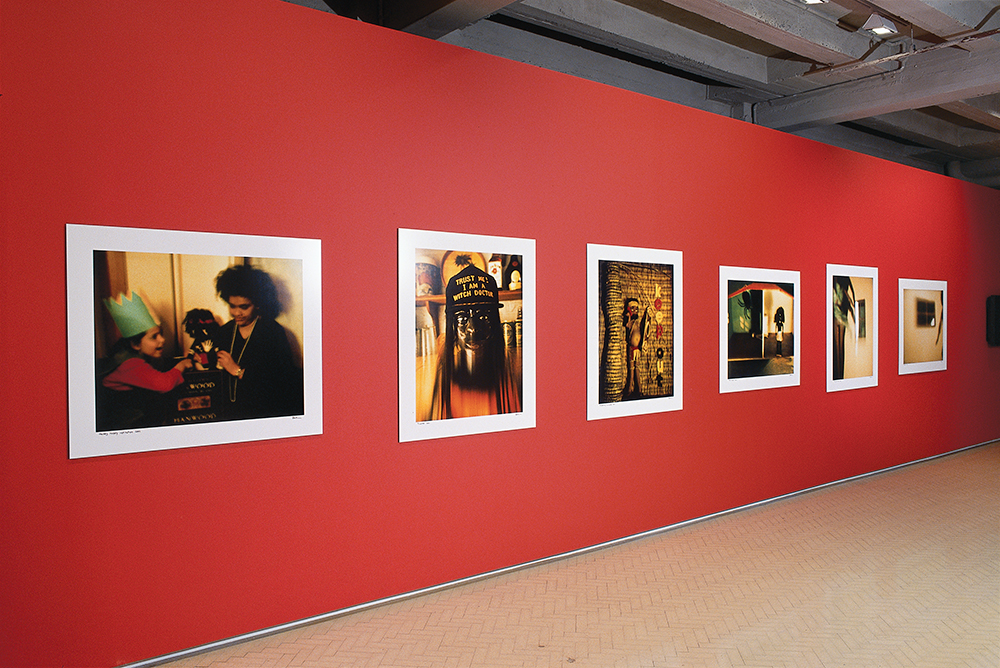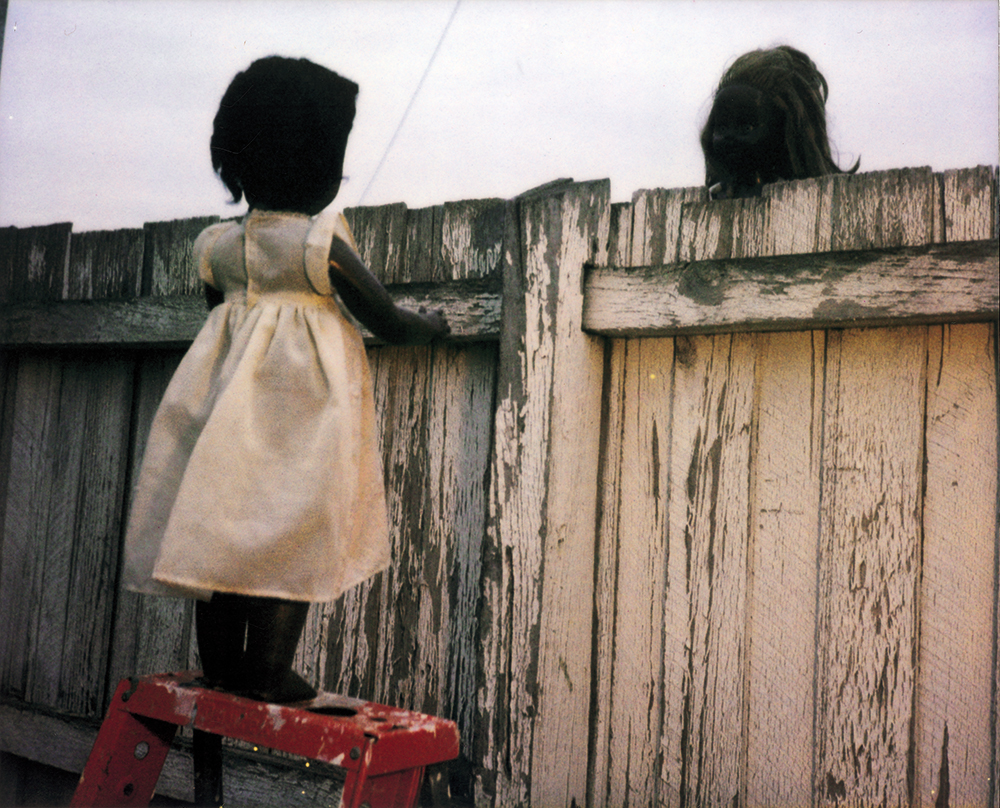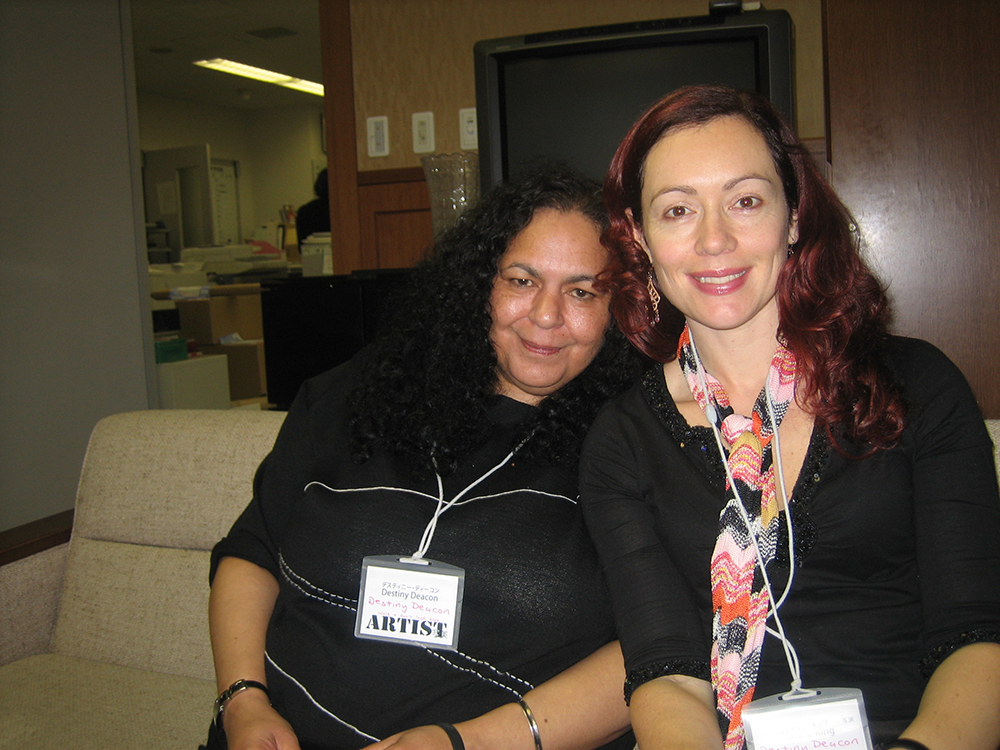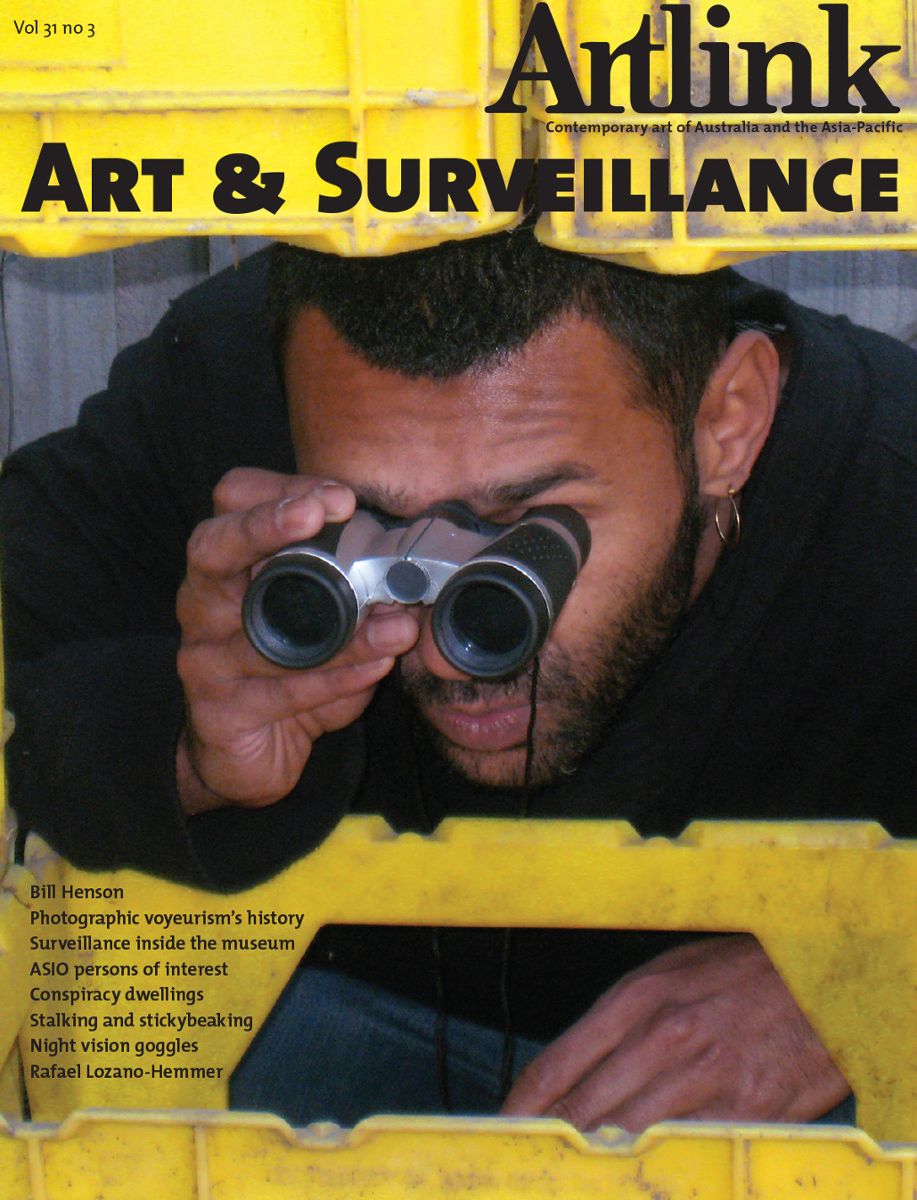
It all started in 1994 with a small levitating spooky black doll in a tutu called Waiting for Goddess, one of Destiny’s numerous clever puns riffing off Samuel Beckett’s Waiting for Godot (1953). This was my introduction to Destiny’s make-believe world when I curated her cast of blak dolls in polaroid outputs into an exhibition called Bad Toys at the Australian Centre for Contemporary Art, back when the gallery was in Melbourne’s inner city gardens.
Destiny told me from the start: ‘If you can work with me, you can work with any artist. I’m someone you learn a lot from.’
I certainly learnt a lot from such a funny, clever friend. Destiny was super smart, a voracious reader with endless newspaper subscriptions and well-versed on topics from popular culture to politics. She had an encyclopaedic knowledge of current affairs and a sharp memory. She was funny and fierce, tender and reliable, often uncertain of herself and self-deprecating, tinged with bouts of anxiety. Our enduring artist/curator bond was based on camaraderie and a dose of humour.
She always said: ‘There is no excuse for ignorance.’ Destiny didn’t get up and make art every day, more often when curators like me were on her back. Her practice was researched from daily life, through television, newspapers, the internet, videos and library books — in short, the mass media available in her studio/living room. Pieces of Koori kitsch, dolls and other objects were given to her by obliging friends, sourced from thrift shops.


An unlikely match, we hit it off from the beginning, a visionary political artist from Far North Queensland / the Torres Strait Islands and a girl from North Balwyn. As Destiny said, ‘we put up with each other in the art world’, or what she referred to as ‘a mug’s game; there’s no money in it.’
As a domestic choreographer with a Polaroid and video camera, she used maimed dolls and props to star alongside Aboriginalia and souvenirs. Family and friends also appear in her unsettling dioramas. ‘Aboriginalia was once seen as part of the flora and fauna. I just thought I’d put another edge or spin to them to make them come alive and earn their keep ... and hopefully confront people and make them think.’
Destiny took the ‘c’ out of ‘black’, and blak is now part of the art world vernacular. Her subversive humour engaged with political and racial themes in her work and life. During the 1980s and ‘90s, she was a regular presence on Naarm’s airwaves, presenting alongside Lisa Bellear and Janina Harding on 3CR’s weekly Not another Koorie show radio program.
But Destiny came to art relatively late, in her 30s. She completed a Bachelor of Arts (in politics) in 1979 from the University of Melbourne then a Diploma of Education at Latrobe University, and she taught in high schools and community schools before becoming the artist we knew so well.
Inspired by her mother, Eleanor Harding, Destiny eventually followed her passion for politics and became one of “Charlie’s Angels”, working for Aboriginal activist Dr Charles Perkins as a staff trainer in Canberra, before beginning her photographic art career in 1990. She had early success, participating in the Biennale of Sydney, the 1st Johannesburg Biennale, Havana Biennial, the Asia Pacific Triennial at Queensland Art Gallery, documenta 11, Melbourne International Biennial and the Yokohama Triennale.
For decades, life revolved around Destiny’s house in Hope Street, Brunswick, where she lived with the Aboriginal poet and activist Lisa Bellear (1961–2006). Destiny once told me proudly that there had been violent crimes and stabbings in their street, contributing to its longstanding infamy. Hope Street was the headquarters of Destiny’s world. A corner block, its long, rickety fence subsequently appeared in Destiny’s photograph Over the fence (2000), of two "sheilas” yarning over a suburban fence. Outdoor shenanigans and indoor gatherings were a feature of life and visits there, with Destiny’s longtime collaborator and partner Virginia Fraser (1947–2021) ever present. The bedrooms were overflowing with crates, so Destiny ended up living and sleeping in the loungeroom.
Visiting her home was like walking into her world. There were black dolls, boomerangs and piles of kitsch ceramics, posters, crates and Trevor, a black bust with dreadlocks and cap, perched on top of the fridge: ‘It was the only place I could fit the bastard’. Trevor’s long, black dreadlocks once adorned Destiny’s own head, and were haphazardly glued to Trevor under a cap saying TRUST ME! I AM A WITCH DOCTOR from her series Forced into images (2001). It was exhibited in Destiny’s monographic survey exhibition Walk & don’t look blak at the Museum of Contemporary Art (MCA), Sydney, in 2004, that I had the privilege to curate. At the time, Destiny had no records or archive, just a handful of slides in a shopping bag under her bed.
The exhibition title was derived from a Temptations song, Don’t look back (1965), covered by Peter Tosh (with Mick Jagger accompanying) on Tosh’s Bush Doctor (1978) album, signalling Destiny’s comprehensive knowledge of popular culture, music and history. We recreated her living room at the MCA and she never quite forgave me as she lost all her furniture for three months but revelled in finally having a million-dollar view, overlooking the Sydney Opera House and the Harbour Bridge.
When I went over to work with her, Destiny usually played Barbra Streisand, as she had formed a view that I would want to listen to Yentl (1983) or Barbra in the film Exodus (1960).

In 2009 Destiny received The Deadlys Visual Artist of the Year and the National Aboriginal and Torres Strait Islanders Award. In 2018, she was awarded the Yalingwa Fellowship and in 2019, Doctor of Education (honoris causa) from Latrobe University and in 2022, the Centenary Medal from the Royal Photographic Society (previous recipients were Nan Goldin and Annie Leibovitz.) She was proud of these accolades.
In 2023, when she was sick, we travelled together with Sofii Belling Harding to the United Arab Emirates Sharjah Biennial 15, conceived by the late Okwui Enwezor and curated by Hoor Al Qasimi. Destiny was determined to make the most of it by pushing her walker through the cobbled lanes of Sharjah in the searing heat to look at every other artist’s work.
Destiny had a sharp wit and liked that I laughed at her jokes. When I told her that I was curating a Triennale on the theme of coexistence, she remarked, ‘well that’s one size fits all’. Another constant refrain was ‘She’ll be right on the night’, and she would tell international curators, ‘Let me do the worrying’.
In 2024, when she showed in the Biennale of Sydney, she cleverly inverted the name of the new Biennale venue the power station at White Bay to Blak Bay.
Two days before she passed away after a long fight with cancer, Destiny was lying increasingly ill in ICU. She was giving instructions and taking selfies to keep up with her socials and finishing new work for a Musée du quai Branly commission in Paris. She always made do with what was at hand and used to say, ‘it’s hard yakka making them dolls say something’ and that she was ‘a shy photographer’.
